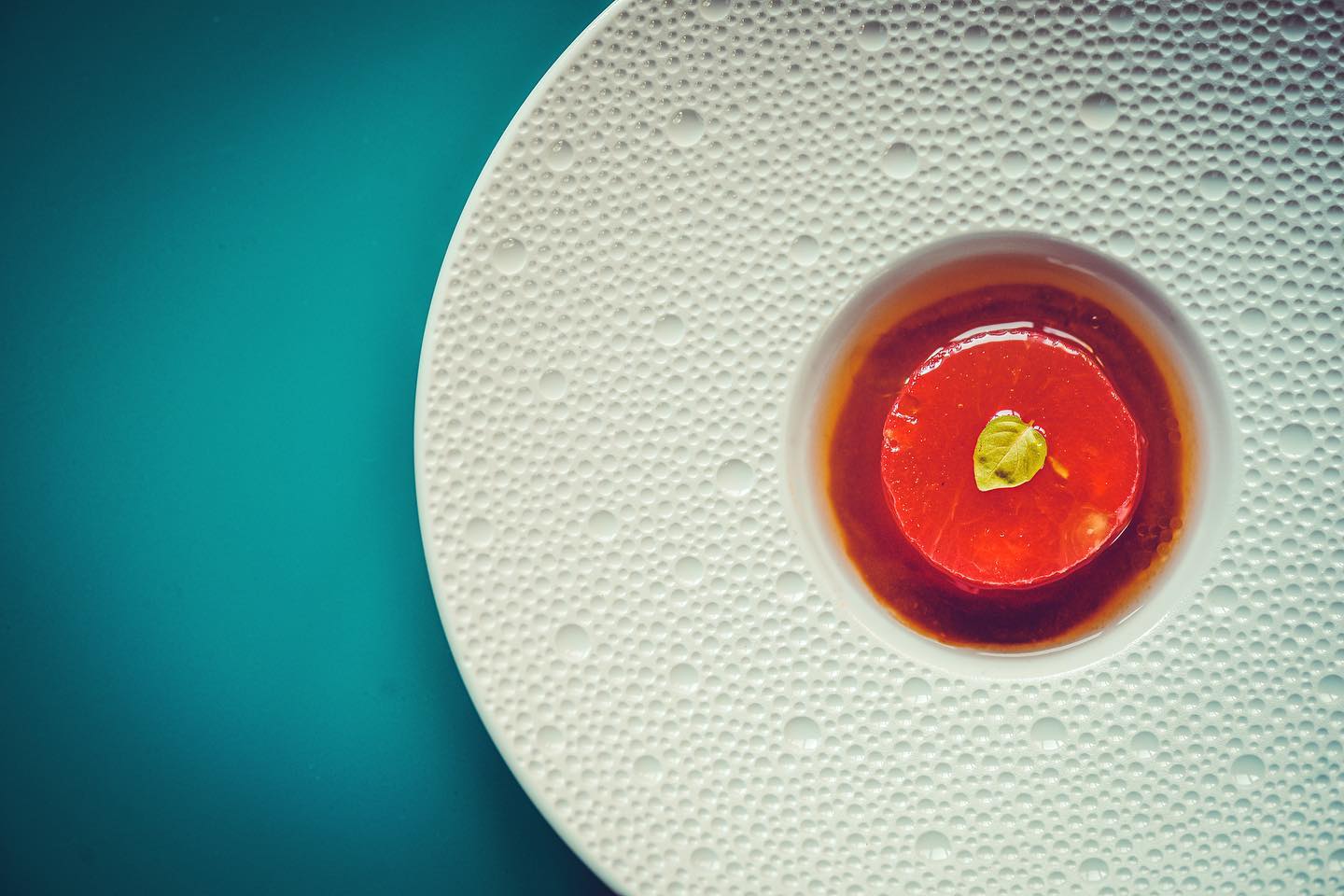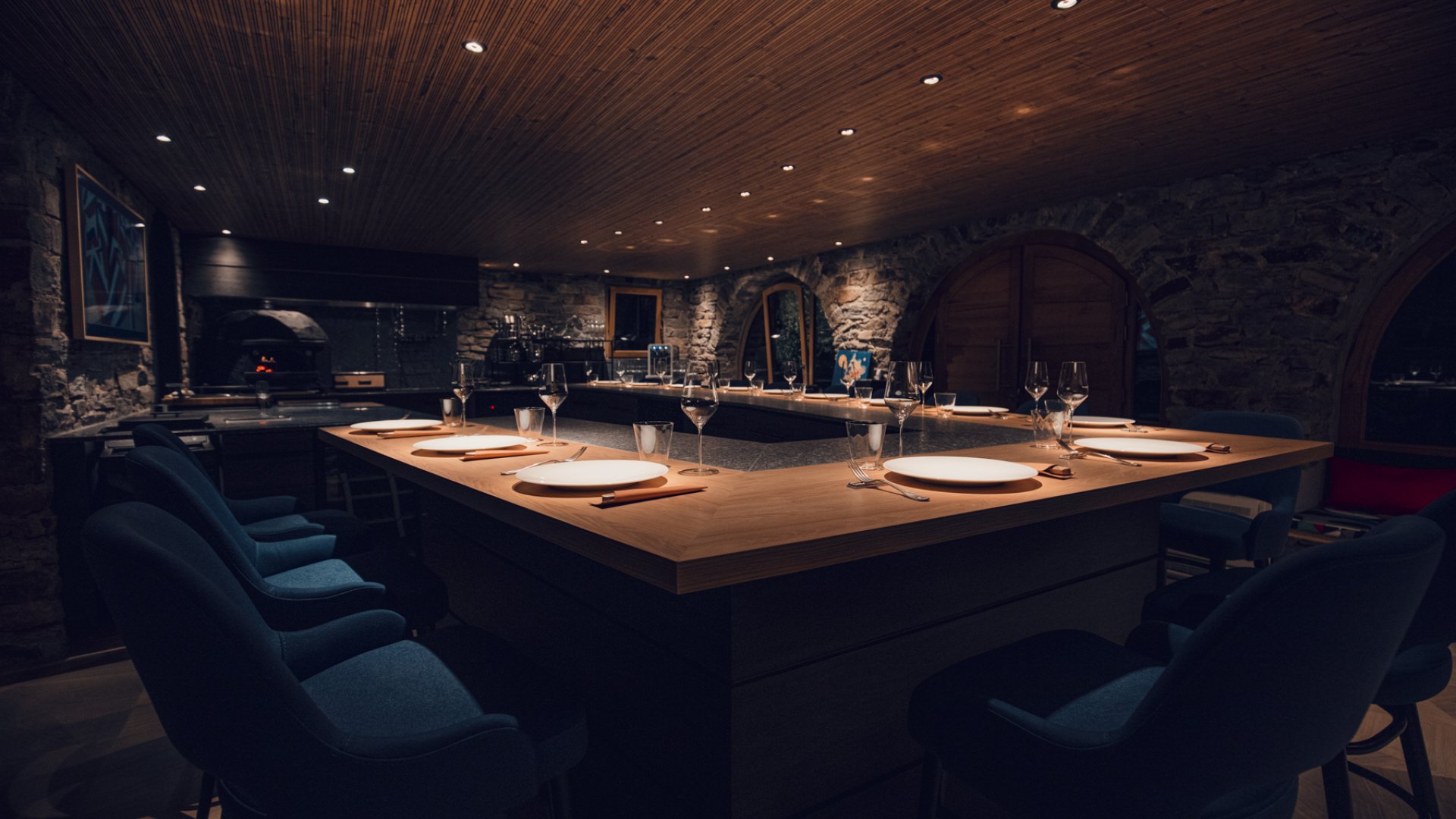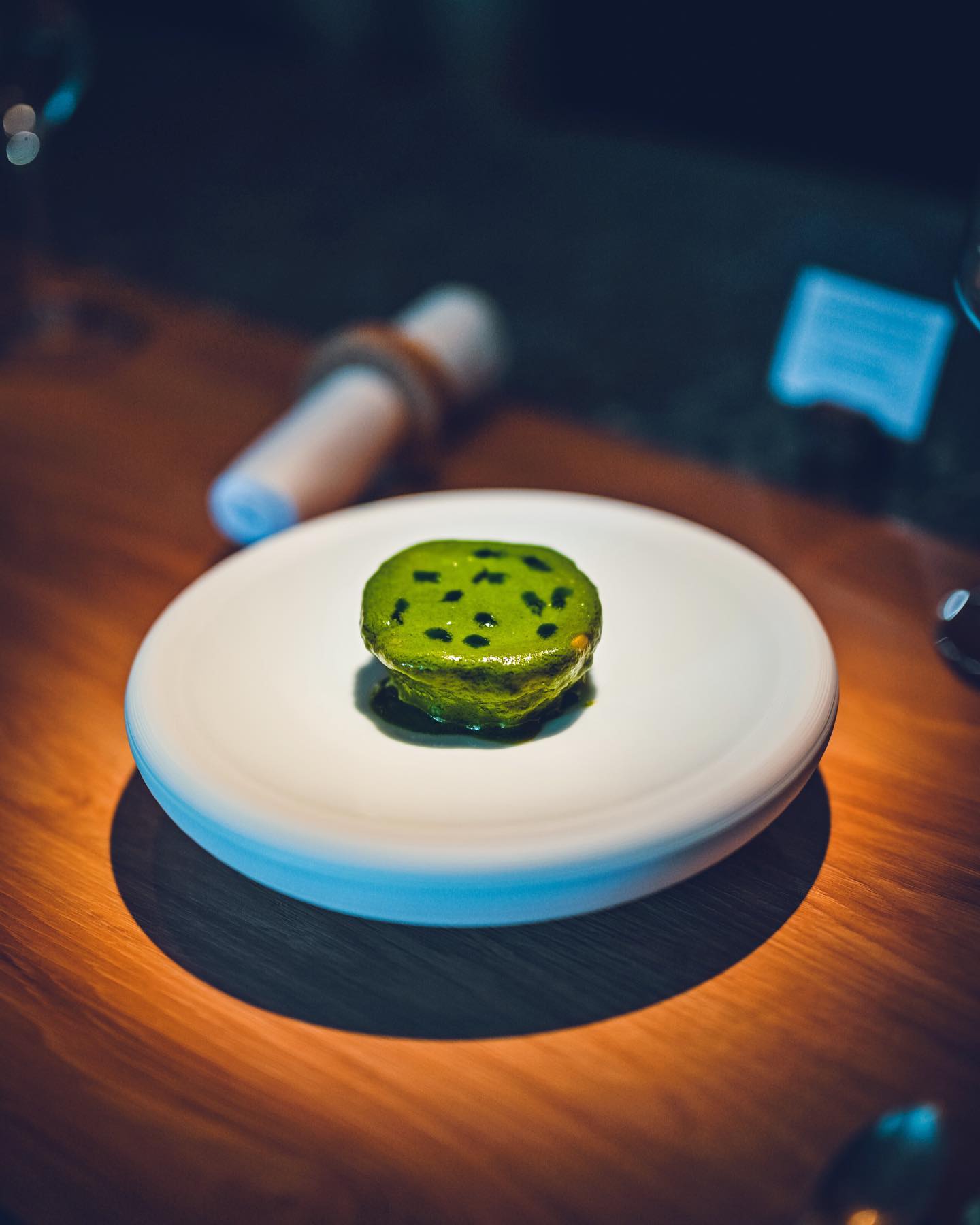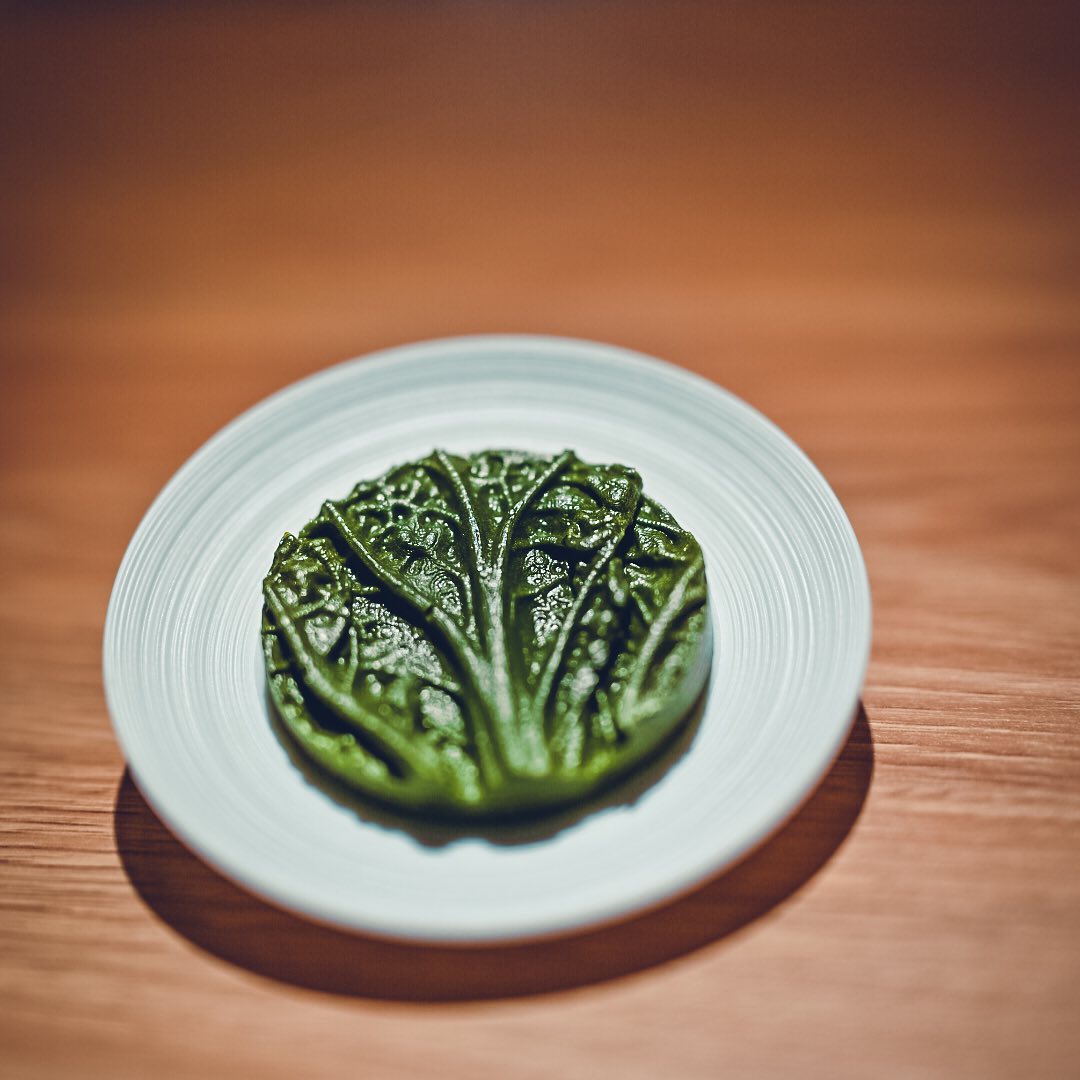Regarding customer experience, one restaurant stands out: Villa Pinewood. Recently rewarded with a (double) Michelin star, I had its Chef and friend Thomas Cabrol on my podcast. We talked a little about cooking but mostly about the entrepreneurial approach and its marketing secrets. Villa Pinewood proposes to its customers a culinary and educational experience. Everything is done to showcase local products, the farthest of which is only 65 km away.
Villa Pinewood: the essentials
- The customer experience is centered around the presentation of products and dishes
- The dishes are carried out in front of the guests, which allows for discussion, unlike a traditional restaurant where the Chef may only come by at the end of the service
- The 14 guests sit down at the same time (7:30 pm), which allows the Chef (Thomas Cabrol) to work alone in the kitchen thanks to the economies of scale
- La Villa Pinewood bets on locavorism with products from 30 km around the restaurant (including pepper!)
- Far away spices are replaced by local plants to achieve the same effect
- Villa Pinewood has a Google rating of 4.9/5 with over 500 reviews, which is outstanding
Villa Pinewood’s culinary experience: unprecedented
Villa Pinewood is the only restaurant in the world where customers are treated to a PowerPoint projection. It is also the only restaurant where all customers must arrive simultaneously or risk being refused entry. The concept of Villa Pinewood goes beyond that of classic gastronomy. You are invited to Anne and Thomas Cabrol’s home and at the same time to the theater. And as guests respectful of the host, you must arrive on time. At 7:30 pm, to be precise. Everyone sits down at the same time.
Thomas cooks in front of his 14 guests 4 nights a week (Wednesday to Saturday, closed Sunday to Tuesday). Anne is in charge of the wines, which also play an important role in this event.
The originality and quality of the restaurant have just been rewarded by the Michelin Guide, which awarded it a red and a green star. The latter rewards restaurants that are committed to a local approach. But even without these stars, the Villa Pinewood experience was already a phenomenal success. Like many “trendy” restaurants, reservations are open a month in advance, and Thomas told me during the podcast that all the Saturday seats were snapped up in 3 minutes.
But let’s return to the Villa Pinewood concept and its genesis.
The genesis of the concept behind Villa Pinewood
The genesis behind Villa Pinewood’s concept can be traced back to Anne and Thomas’ life project and their previous experiences. Thomas’ third entrepreneurial project borrows heavily from the first two regarding process and marketing.
Since Villa Pinewood is, above all, a couple’s project, the company had to be able to run with only two people (Anne and Thomas), which meant making some drastic operational choices. Thomas mentions in the podcast the case of Japanese restaurants where a single chef cooks for a limited number of guests without sacrificing quality. That was the first inspiration.
The second inspiration was drawn from Thomas’ previous company, N5 Wine Bar. Launched in 2014, N5 had this particularity of serving food in 2 courses (at 7:30 pm and 9:30 pm). This imposed constraint allowed the chef economies of scale (all dishes of the same type were made simultaneously). This inspiration can be found at the Pinewood Villa, where all guests must arrive at the same time.
The third inspiration is ProDegustation, Thomas’ first company. This company organized wine courses. Training was its core business. We find this pedagogical axis at Villa Pinewood in the interactions between the guests and the Chef during the tasting and the presentation broadcast on-screen during the meal. This is the third inspiration.
Locavorism at the center of the culinary experience
We have yet to talk about what’s on the plate. Through previous experiences, Thomas has developed strong photography skills and uses them to enhance his creations. A visual pleasure, therefore, doubles the gustatory pleasure because he has developed a real talent for making his dishes very graphic. You can judge based on the pictures in this article.
Thomas’ idea is to use only very local products. Everything comes from 30 km around the restaurant, except the salt (65 km). To avoid using far-away spices, Thomas replaced them with local plants to obtain the same “effects.” He also took a 6-month botanical training course to deepen his knowledge and better exploit the plants of the Montagne Noire at the foot of which Villa Pinewood is located.
This search for local ingredients lets him showcase his pickings on his Facebook page. It’s a very smart way to create a link with his terroir and with his community. It also allows him to develop a discourse based on transparency when the origin of products is more and more complicated to trace.
The best Google rating in the world?
But in the end, do customers like this culinary experience? It’s important to point out that this is a culinary experience in the true sense of the word. No molecular cooking or crazy experiments in Thomas’ kitchen. Above all, it must be good… and beautiful.
The more than 500 Google reviews with an average rating of 4.9/5 are proof that customer satisfaction is there. It’s one of the best Google ratings I’ve seen (relative to the number of reviews). Still, it was not a foregone conclusion. As Thomas explains in the podcast, we had to accept the idea of being on time to eat at a specific time, which is a challenge in a rural area of southwest France. The idea finally caught on by dint of perseverance and also because the clientele comes from afar.

Villa Pinewood: marketing analysis
This article wouldn’t be complete without a concluding word on the marketing aspects of Villa Pinewood.
The centerpiece is, of course, the quality of the food. I will say it again and again. With quality, it is possible to create customer satisfaction and the loyalty that goes with it. Once you have this essential element, you can start developing marketing strategies. Villa Pinewood’s strategies are multiple:
- scarcity of the offer(only 14 places, 4 evenings per week, and opening of the reservations 1 month in advance) : the places on Saturday leave in 3 minutes, those on Friday in 10 minutes.
- dramatization : the product is put forward thanks to the interactions with the Chef, the pedagogy learned from previous experiences, and the wines that enhance the whole.
- inbound marketing : there is no need to advertise since magazines, gastronomic guides, and customers take care of spreading positive word of mouth (look at Google reviews).
- Use of social networks : Thomas uses Facebook and Instagram to share visual posts (dishes) that perfectly lend themselves to this distribution. Videos are also great because they give a good understanding of where the products come from and thus build trust with (future) customers.
Posted in Marketing.



